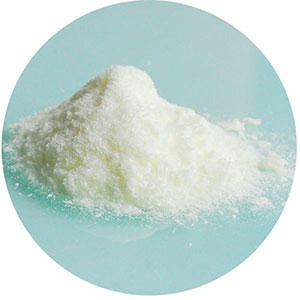Induction of photoinitiator

In the photocuring system, UV adhesive, UV coating and UV ink undergo chemical change by accepting or absorbing external energy, and decompose into free radicals or cations, thereby initiating polymerization reaction.
The substances that generate radicals and further initiate polymerization by light irradiation are collectively called photoinitiators. After irradiation, some monomers absorb photons to form an excited state M*: M+hv → M*; the excited active molecules undergo homolytic cracking to generate free radicals: M* → R·+R′·, then initiates monomer polymerization and generates macromolecules.
Photoinitiator, also called photosensitizer or photocuring agent, is a type of energy that can absorb certain wavelengths in the ultraviolet (250-420nm) or visible (400-800nm) regions. Which can produce radicals, cations, etc. Thereby initiating cross-link curing of the monomer polymerized compounds.
Radiation curing technology is a new energy-saving and environmentally friendly technology. UV radiation, electron beam (EB), infrared light, visible light, laser, chemical fluorescence and other radiation lights irradiation curing is fully compatible with the “5E” feature: efficient, enabling, economical, energy saving, and environmental friendly. Sa radiation curing technology is known as “green technology.” Photoinitiator is one of the important components of light-cured adhesives, which plays a decisive role in the cure rate. After the photoinitiator is irradiated by ultraviolet light, it absorbs the energy of light and splits into two active radicals, which triggers the linkage polymerization of the photosensitive resin and the reactive diluent, so that the adhesive is cross-linked and cured. Its characters are rapidness, environmental protection, and energy saving.
Classification of photoinitiators
Photoinitiator is fully known as UV-curable photoinitiator and can be divided into three categories.
Photoinitiator
Free radicals such as BP are formed by hydrogen abstraction reactions.
Hydrogen abstraction mechanism
Excited photoinitiator molecules take hydrogen atoms from hydrogen atom donors such as active monomers and low molecular weight prepolymers, to make them free radicals and initiate polymerization reactions:
X ——- X· ——– XH·+ R·
In the formula, X and RH can be the same.
Cracking initiator
It absorbs the ultraviolet quantum emitted by strong ultraviolet light, thereby initiating the polymerization cross-linking and grafting reaction, so that the liquid forms a solid film within a fraction of a second, such as 1173, 184, 907, 369, 1490 , 1700 and so on.
Cleavage reaction mechanism
After the photoinitiator molecule absorbs light energy, the excited state takes place the Norrish I reaction from the ground state to the excited state, The covalent bonds between carbonyl and neighboring carbon atoms elongate, weaken, break, and form primary free radicals.
X – Y —— (X…Y)· → X·+ Y·
In the above formulae, the two primary free radicals generated may be the same or different.
Cationic photoinitiator
Cationic photoinitiator is another kind of very important photoinitiator, including diazonium salts, diaryl iodonium salts, triarylsulfonium salts, alkyl sulfonium salts, iron aromatic salts, sulfonyloxy ketones and triaryl silicones. Its basic function is that the light activates the molecule to the excited state, and the molecule undergoes a series of decomposition reactions, eventually producing a super-strong protonic acid (also known as Bronsted acid or Lewis acid), which acts as an active species of cationic polymerization to initiate the epoxy compound, Vinyl ethers, lactones, acetals, cyclic ethers and other polymerizations.
Cationic photoinitiators can be classified into sulfonium salts, metal organics, and organosilanes, among which iodonium salts, sulfonium salts, and iron aromatic hydrocarbons are the representative of them.
The photolysis of the most commonly used diaryl iodonium salt I-250 can produce homolysis and heterocracking at the same time, and the production of super acid and active radicals. Therefore, in addition to cation photopolymerization, iodonium salt can also initiate free radical polymerization, which is a common feature of iodonium salt and sulfonium salt.
